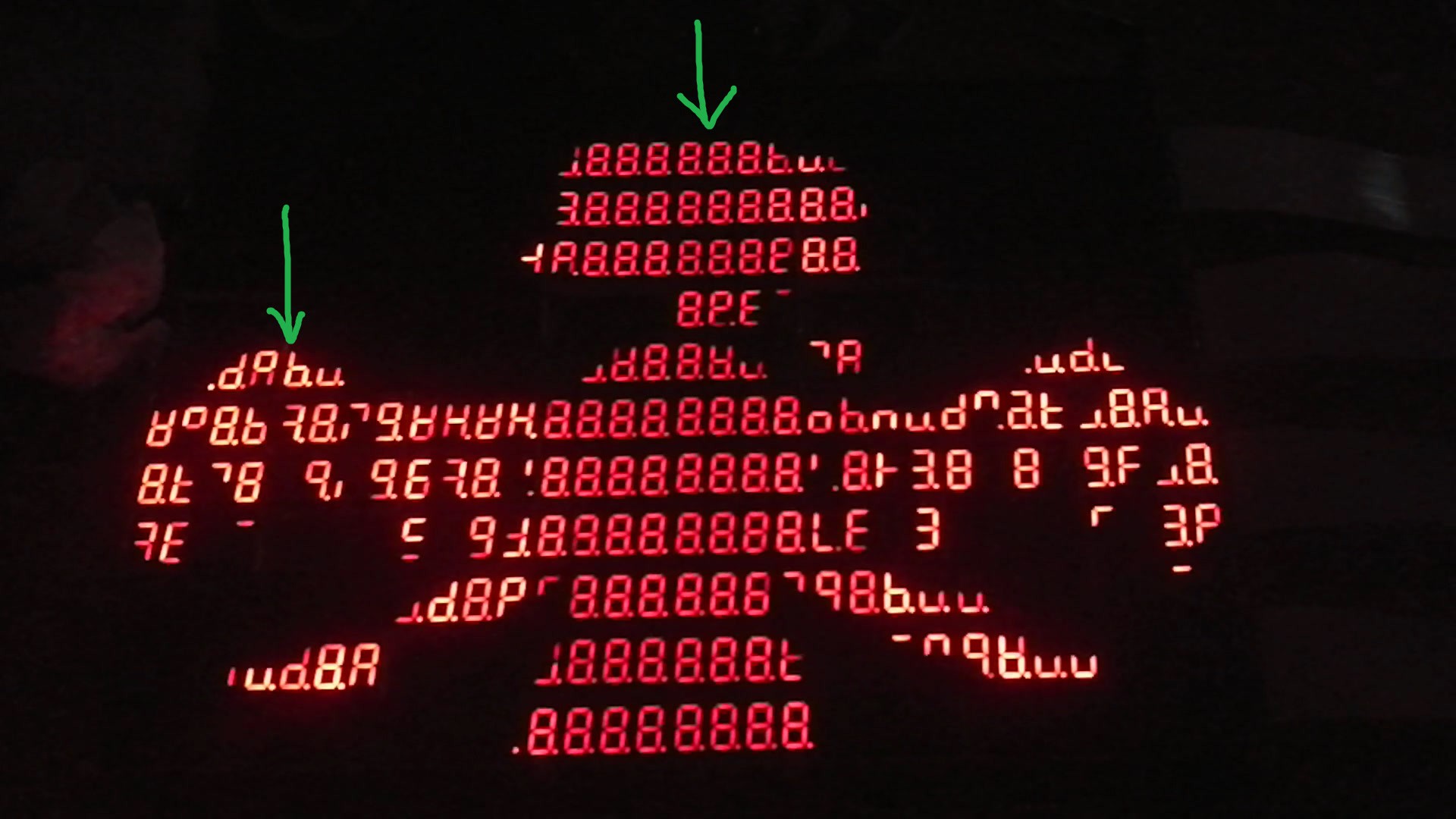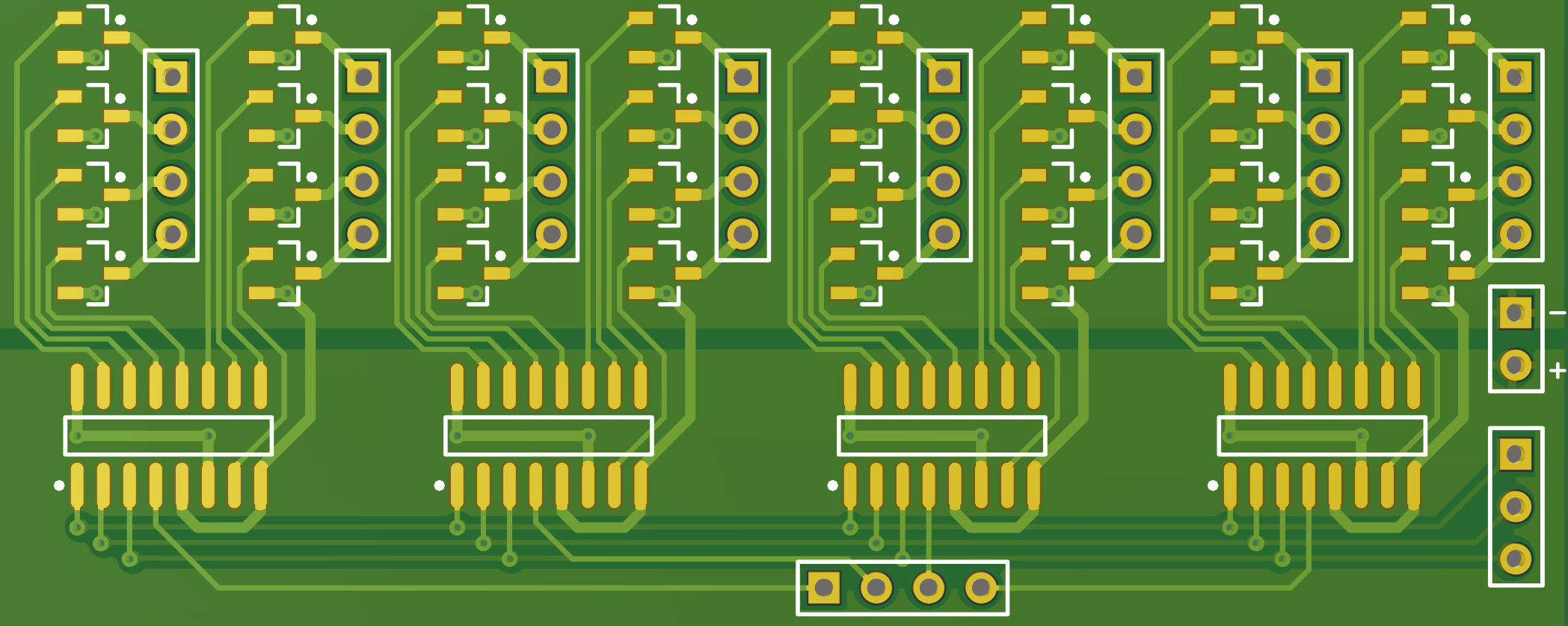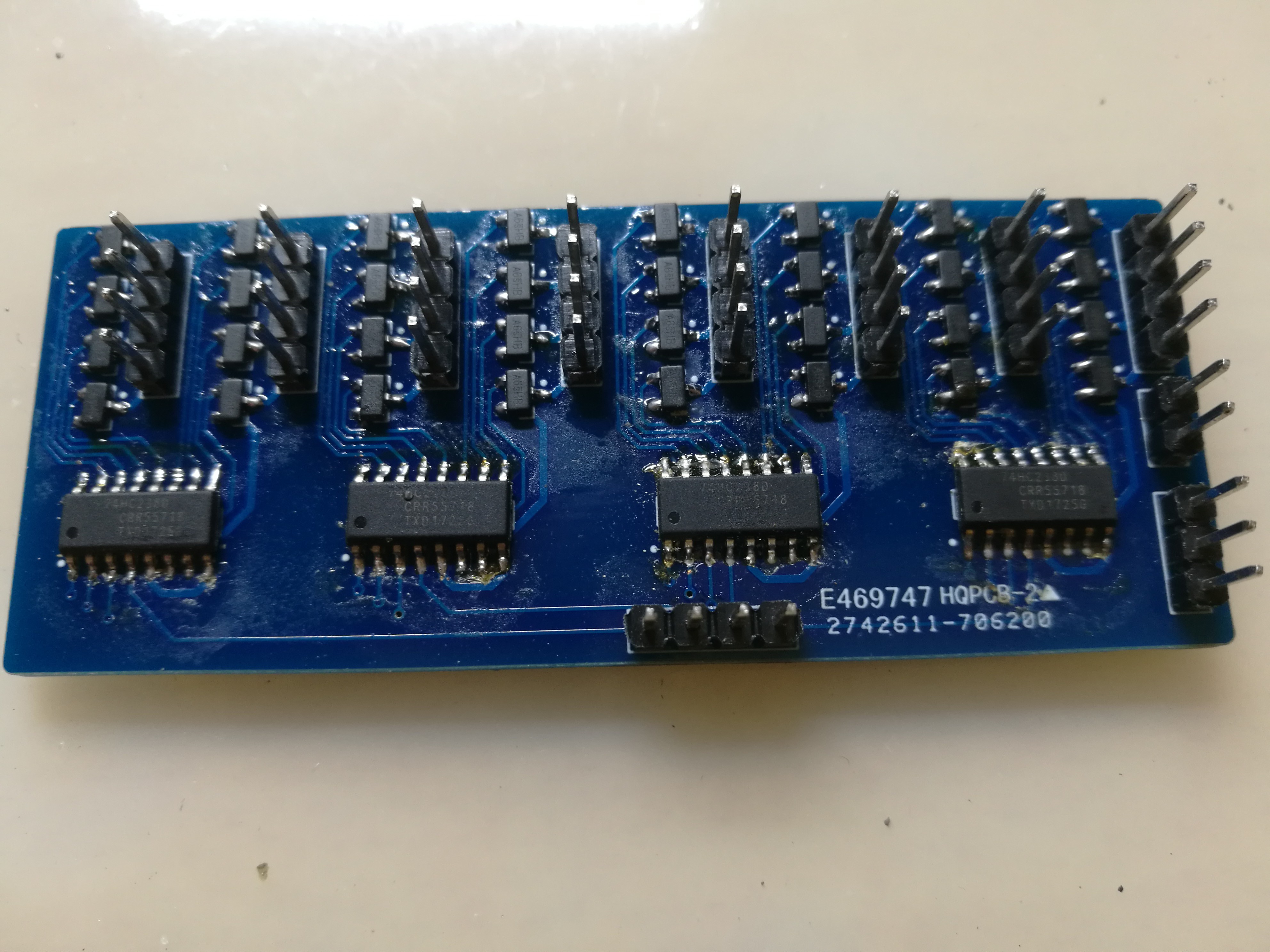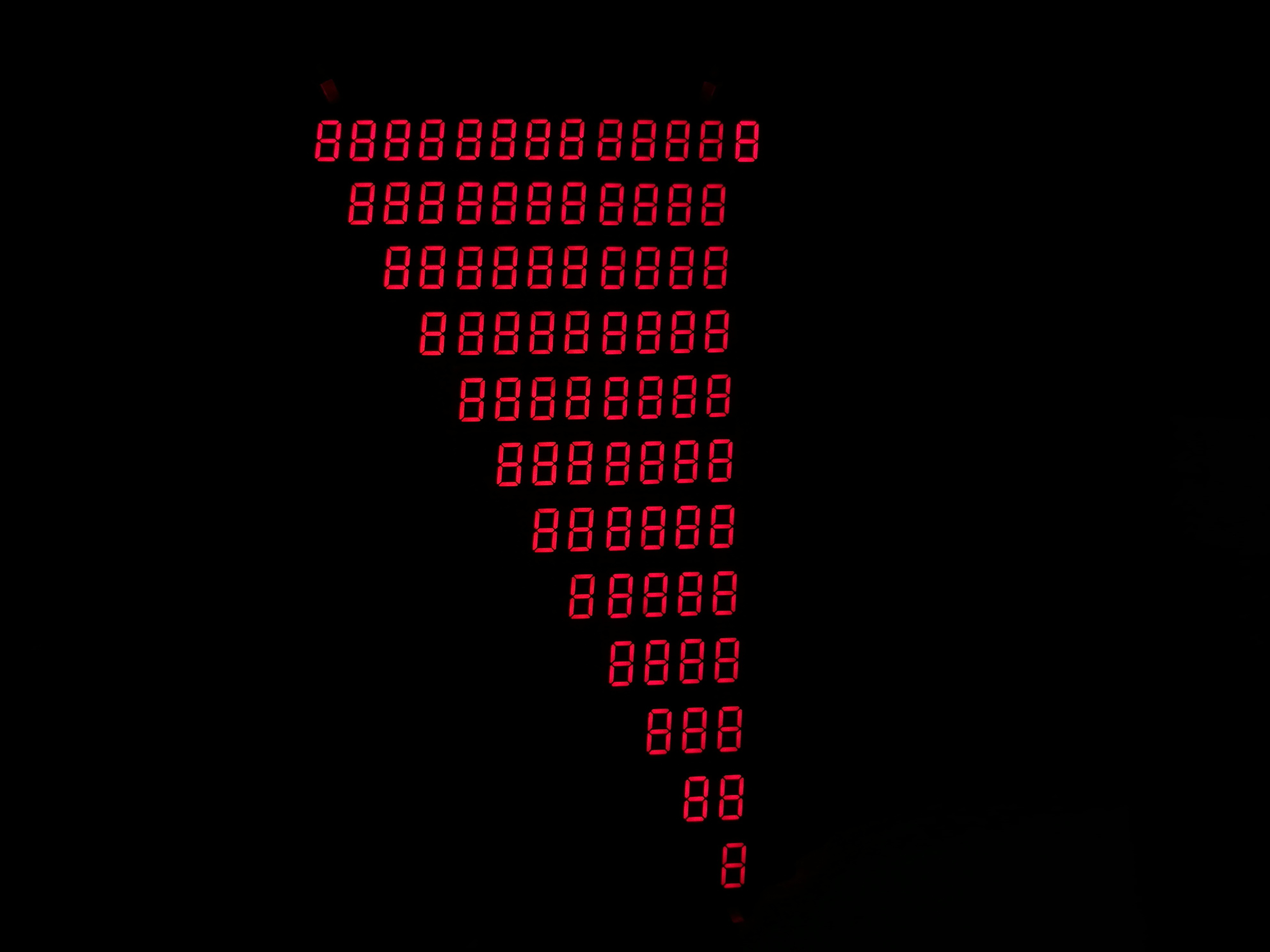Those days I was busy on other projects. Sorry for the late update!😂
And since I'm not a native English speaker, feel free to leave a comment, if there're any improper expressions or grammar mistakes. Thanks.❤
At first, I thought I could drive the array using 74HC595 for anode, and 74HC138 for cathode. But I was wrong. 74HC138's driving capacity is too low. So when there're many LEDs lit in one row, the row became really dim. Here's an example:

This is because of the weak driving capacity of cathode.
So I realized I have to use MOSFETs for cathode. For this application, we just have to use a n-channel MOSFET, and connect "Source" to GND, then, it will behave like a low-side switch: if we output HIGH to gate, source-drain is connected, so the switch is ON; when gate is LOW, there's little current going from to drain to source, so the switch is OFF.
So I designed a PCB and made it. In fact, it arrived last Friday, at night. But I can't wait to solder it!


(Sorry for my poor soldering skill, soldering these tiny MOSFETs can be a disaster!)
Now it's time for a test.

Looks OK, yeah? Though there are still (un)noticeable brightness differences... (Look at the first line. I turned my camera's ISO setting to a really low value - about 100, to capture this.)
But, when I managed to light all the LEDs... they all suddenly became dark. I tested the current when half of the LEDs are lit, It's about 0.4A. It seems like the fuse in Arduino stopped me from doing this... So now I have to find another power source...
 AlexGuo1998
AlexGuo1998
Discussions
Become a Hackaday.io Member
Create an account to leave a comment. Already have an account? Log In.
74LVC138 (3.3V) has a 24mA drive. It is 5V tolerant.
>I asked some professionals, and they told me it's called "Crosstalk".
I wouldn't call it Crosstalk as that's usually dealing with magnetic field or capacitive for high speed signals. It is more like the drive can't source enough current. If I have to give a word for it, it would be "overload".
Are you sure? yes | no
Thanks for explaining this!
Are you sure? yes | no
Well, actually I am one of the "professionals" told him that this can be called as "Crosstalk". I borrowed the concept from LCD driving (so this is probably not a correct term for LED matrix). According to the paper released by IBM, display crosstalk is "the undesired artifact resulting when intended root-mean-square gray-scale voltage across the liquid crystal is altered by the following mechanisms: 1) incomplete pixel charging current due to such factors as unequal data-driving loading, low thin-film-transistor transconductance, and the line waveform distortion and delay; 2) leakage current from the pixel through the TFT or LC; and 3) displacement currents caused by parasitic capacitive coupling of the pixel to both adjacent signal-line voltage changes." Though there is obviously no LC or TFT in a LED matrix, but I guess the concept can be similar. You can see it is definitely no just about magnetic field or capacitive, though can be factors, and loading effect is also a factor of the display crosstalk.
Are you sure? yes | no
Crosstalk usually means that unrelated signal was getting garbled because a nearby signal causes interference. Right now there are no artifacts on the LED segment where it doesn't match what was programmed just the overall brightness.
https://en.wikipedia.org/wiki/Crosstalk
LED eithers goes on or off unlike LCD where you have a complex multiple level (AC) signal driving the segments.
Are you sure? yes | no
So basically you are talking about "crosstalk" in general while I am talking about "display crosstalk". They are not the same thing. I agree with you this is not signal crosstalk, but my point is that, this could be called as display crosstalk. Since this is definitely a display, I do not see why it is inappropriate to use the term crosstalk here.
Are you sure? yes | no
The quote was without the display term - see exactly what I quote. i.e. it is the general term being referred that I am replying to. This is the danger to use these terms when other definitions are more appropriate. Out of your list, 2 and 3 are coupling.
Since the 74HC138 was driving beyond what it was designed for, I call it "overload".
>I asked some professionals, and they told me it's called "Crosstalk".
Are you sure? yes | no
And people do not usually specifically use the term "display crosstalk" when they are talking about displays. It is implied. Though obviously it would be better if the "display" term is added to avoid any confusions.
Are you sure? yes | no
If you have two guys in the display field talking, then chances it is implicitly understood. However, you are telling someone outside of the field about "crosstalk" which I and no doubt most are here. That's the problem of making assumptions of the audience and not being specific. Also person to person communication are not 100%, so information get distorted after hearing it 3rd person.
Are you sure? yes | no